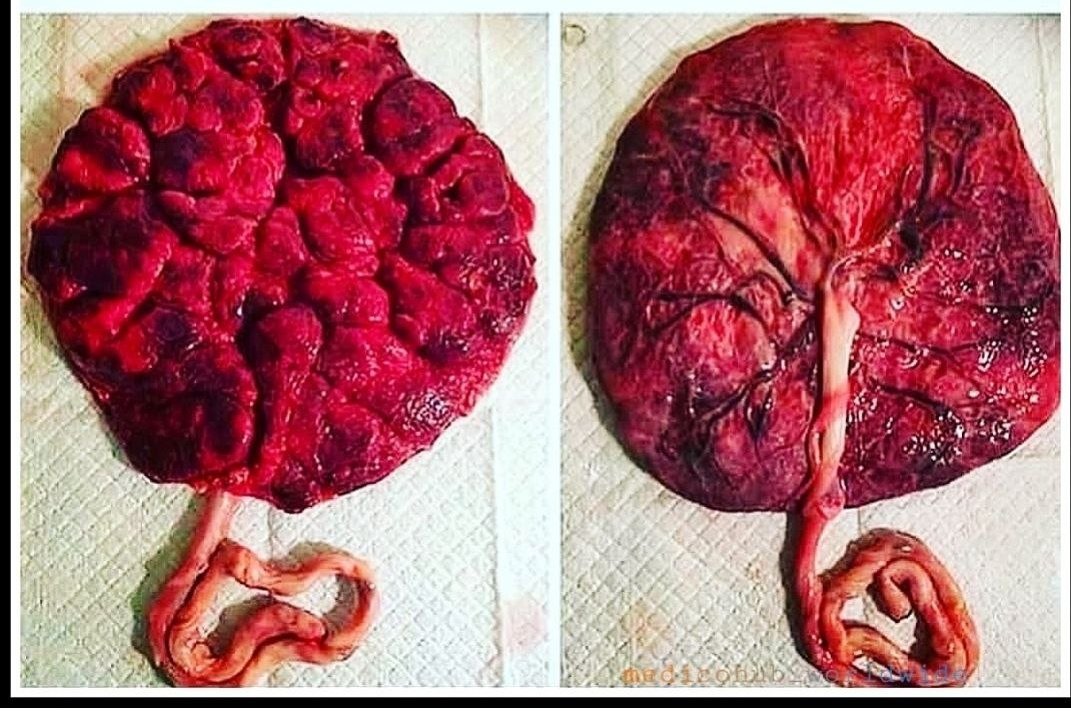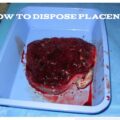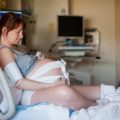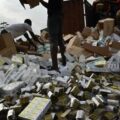
According to data from the United Nations (UN), approximately 140 million babies are born worldwide a year. Learning how to hygienically dispose a placenta after a baby is born is vital because improperly disposing the placenta can have negative effects on the mother, the child and the community where the improper disposal took place.
The placenta is crucial to keeping your baby alive and well during pregnancy. It is an organ attached to the lining of the womb that delivers oxygen and nutrients to the growing baby. The placenta is attached to the wall of the uterus, usually at the top or side. The umbilical cord connects the placenta to your baby.
Blood from the mother passes through the placenta, filtering oxygen, glucose and other nutrients to your baby via the umbilical cord. The placenta also filters out substances that could be harmful to your baby and removes carbon dioxide and waste products from your baby’s blood.
The placenta produces a number of hormones that are needed during pregnancy, such as lactogen, oestrogen and progesterone. It keeps the mother’s blood separate from the baby’s blood to protect the baby against infections. Towards the end of the pregnancy, the placenta passes on antibodies to protect the baby after birth.
The placenta is expelled from a woman’s body after the birth, usually about 5 to 30 minutes after the baby is born. This is called the third stage of labour. Sometimes your abdomen will be massaged or you will be given an injection of oxytocin and the umbilical cord will be gently pulled to help deliver the placenta. If you have a caesarean section, the doctor will remove the placenta at the same time.
It is important that the whole placenta comes out after pregnancy. If any fragments of the placenta stay inside, they will have to be surgically removed to prevent bleeding and infection.
Common Methods of Disposing placenta
Placenta disposal policy can vary significantly from country to country. Even within the same country there could be several methods and policies for placenta disposal depending on the culture and religion of the people. Nevertheless, when it comes to public health the only considerations are hygiene and community health because simply throwing it out in the garbage is unhygienic and is going to attract wild animals, maggots, flies and eventually disease. There are several methods of disposing placenta after child birth here is how best to dispose a placenta after delivery:
Burying the placenta: Most countries especially those with large Muslim population adopt this method of placenta disposal. In Islam, the placenta is buried because it is believed that “from the (earth) did We Create you, and into it Shall We return you” (The Noble Quran, 20:55). The Navajo Indians and New Zealand’s Maori, bury the placenta to symbolize the baby’s link to the earth. The placenta can be buried in the backyard or nearby bush but should not be buried in a location likely to contaminate a domestic water supply, near a river or on public land. If you decide that you do not want to bury the placenta, it cannot be disposed of in a domestic waste bin. Generally, it takes around 10 days for a buried placenta to decompose.
Burning the placenta: Another method of disposing placenta is to burn it. The placenta is often burned with straw, chaff, wood or charcoal fire until only the ashes are left. Depending on family and region, the ashes of the placenta were either washed away in running water or buried underground, but in any case the placenta was first burned. A cross-sectional study conducted in Ghana reported that the use of open-fire pits and substandard incinerators for burning infectious waste such as placenta is common.
Medical Disposal: Most countries in the west including the United States adopt this policy or method of placenta disposal. Hospitals treat placentas as medical waste or biohazard material. The newborn placenta is placed in a biohazard bag for storage. Some hospitals keep the placenta for a period of time in case the need arises to send it to pathology for further analysis. Once the hospital is done with the placenta, it is put on a truck with all the other medical waste accumulated at the hospital for proper disposal. In some hospitals, placentas are incinerated on site. Those who give birth at home may return it in a sealed container or bag to the hospital for disposal. In Australia, health officials are encouraged to willingly accept the return of any placenta that has been released to the mother and should dispose it according to the the local unit’s disposal of medical waste procedure and compliance with general safety protocols.
Conversion to Biofuel: Some countries are adopting innovative ways of using placenta to curb green house gas emissions. A hospital in the Philippines is using human placenta to generate clean energy to power the building and cook their food. A biodigester is usually constructed to generate methane gas from the waste produced by the hospital, including garden and food waste and placenta. The waste is broken down within the biodigester, and the gas produced can then be measured, collected, and used to power the hospital in a sustainable and efficient way.
What You Should Not Do With A Placenta
Do NOT Flush the Placenta Down the toilet: Flushing placenta into the sewage system is an option you should never consider. Apart from the fact that it can block the system, it will take a longer time to decay and possibly lead to the spread of disease. Obstructed sewage can cause typhoid and campylobacteriosis which are infectious diseases. Children are more likely to get infected with typhoid and other skin conditions.
Eat Placenta: From a public health stand point eating placenta is not healthy. Forget what you hear from uneducated celebrities eating placenta could be your one way ticket to the hospital emergency room. The placenta serves as a filter, keeping dangerous waste away from your baby. But some waste could still be contained in the placenta after childbirth. “While the placenta is in uterus, it’s almost like a filter, filtering out things the baby shouldn’t get, including bacteria. Any infection in your blood lives in your placenta, drying and converting them to capsules is not safe either.
A 2016 report from the Centers for Disease Control and Prevention (CDC) details a case involving a baby who was born healthy and without complications, but soon developed respiratory issues. When doctors examined the baby, they discovered the presence of B Streptococcus agalactiae (GBS) bacteremia, a dangerous blood infection also known as group B strep. Eventually doctors linked the baby’s infection to placenta eating; the mother was consuming it in capsule form, and she appeared to pass the infection along to the baby while breastfeeding. The team examined the placenta capsules and confirmed this link: The pills were full of GBS, which can cause babies to develop sepsis (infection of the blood), pneumonia (infection in the lungs), and meningitis (infection of the fluid and lining around the brain). While this is a rare case, mothers should still take caution when dealing with Baby’s health. SEE: Baby Things To Buy Before Child Birth





